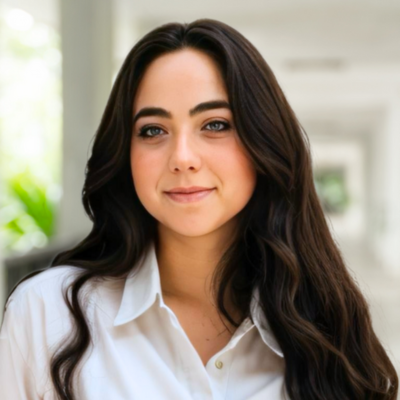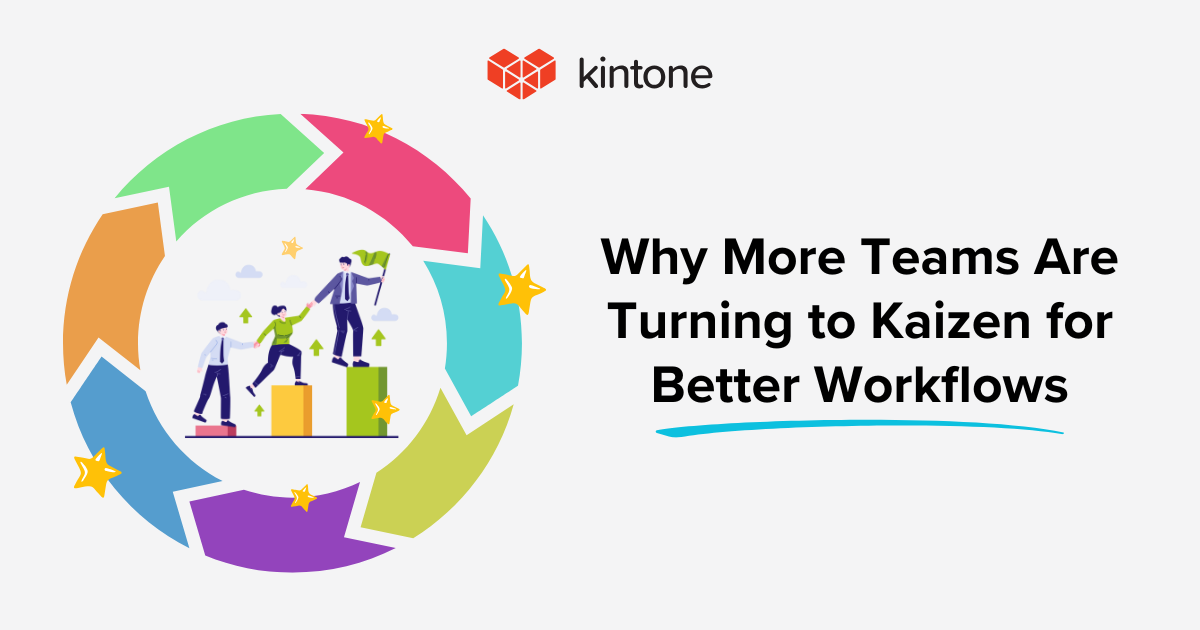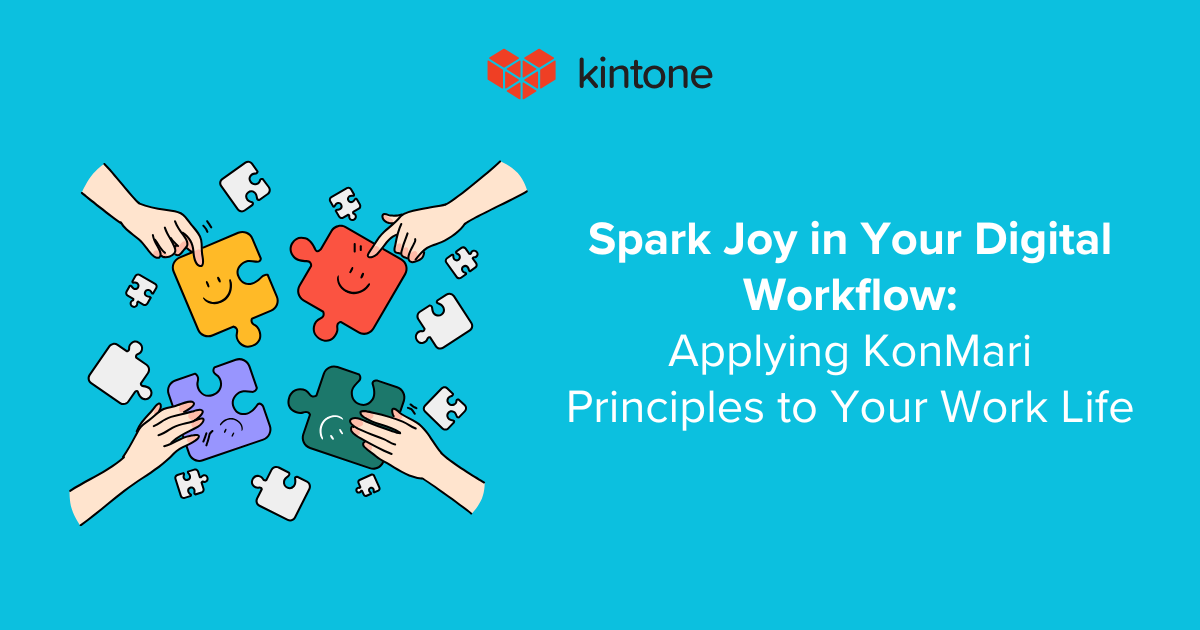Key Highlights
- Wabi-sabi mindset: Wabi-sabi is a Japanese philosophy that encourages embracing imperfection and impermanence, accepting that nothing is permanent or completely finished. In business, this means finding beauty in progress rather than obsessing over flawless end states.
- Progress over perfection: Embracing imperfection creates a culture of continuous improvement. Teams that accept small flaws and missteps are more inclined to learn, adapt, and innovate instead of being paralyzed by fear of failure.
- No-code agility: No-code development tools make iterative improvement seamless. They allow quick modifications and prototyping without extensive re-coding, fostering a culture of continuous improvement where software can evolve with business needs.
- Kintone’s flexibility: Kintone’s no-code platform empowers teams to build and modify custom business apps on the fly—no IT department or developers required. Users can experiment freely with workflows and data structures without fear of “breaking” anything.
- Resilient, adaptable teams: By focusing on iterative refinement instead of one-time perfection, organizations become more resilient and agile. When “perfection includes imperfection” and those flaws are embraced, perfectionism transforms into continuous improvement, yielding robust systems and confident teams.
Finding Beauty in Imperfect Workflows

A 16th century bowl repaired with gold lacquer (kintsugi), an art that epitomizes wabi-sabi by highlighting cracks instead of hiding them. This philosophy finds beauty and strength in the broken and mended.
Imagine your team rolls out a new workflow tool that isn’t 100% polished. There are a few rough edges and missing features. Rather than seeing it as a failure, what if your team views it as a work in progress with potential to grow? This is the essence of wabi-sabi applied to business. In traditional Japanese art, a broken ceramic bowl mended with golden joinery becomes more beautiful for having been broken – its cracks tell a story of resilience and adaptation.
Likewise, an “imperfect” process or application in your organization can be the starting point for learning and improvement, not a disaster to be feared. Embracing the idea that flaws and changes are natural gives your team permission to iterate boldly instead of clinging to rigid, unrealistic plans.
This outlook is more than just a philosophical nicety – it’s increasingly essential in a fast-changing business environment. Projects rarely go exactly as planned, and needs evolve continuously.
A wabi-sabi mindset helps teams remain flexible and calm amid change. It shifts the focus from obsessing over an ideal end state to appreciating the ongoing process. By accepting that no app, workflow, or strategy will ever be truly “finished” or perfect, teams can break free of perfectionism paralysis.
As one project management expert noted, “When timelines break, they’re not evidence of failure. They’re proof of movement… Wabi-Sabi lets us stop reacting in fear—and start responding with insight.” In other words, an unexpected detour or flaw in a project isn’t the end of the world – it can actually guide you to a better outcome if you have the right mindset.
What is Wabi-Sabi and Why Embracing Imperfection Matters
Wabi-sabi is rooted in a deep cultural appreciation for the transient and the imperfect. It teaches that nothing lasts, nothing is complete, and nothing is truly perfect. Instead of denying this reality, wabi-sabi encourages us to embrace it. In business terms, it means recognizing that every system or product is a living, evolving work. There will always be a “crack” or a flaw somewhere – and that’s OK. In fact, those cracks can be where the light gets in, revealing opportunities to improve.
In organizational contexts, adopting a wabi-sabi attitude can be transformative. It has been described as “instrumental in promoting continuous improvement and avoiding the blaming that…gets in the way of learning.”
When teams no longer fear imperfections, they stop wasting energy on finger-pointing or hiding mistakes. Instead, issues are surfaced quickly and treated as valuable feedback. A bug in a process, a bottleneck in a workflow, or an error in data becomes not a shameful failure but a signal – an indication of where the team can focus their next improvement. Accepting that imperfections will happen eliminates the denial and panic that often accompany surprises. It creates psychological safety for team members to say, “This isn’t working – let’s fix it,” without fear of reprimand.
This concept directly combats the dangers of perfectionism in the workplace. While striving for high quality is admirable, perfectionism unchecked can paralyze progress. It’s telling that in a recent McKinsey survey, 85% of executives admitted that fear of failure often holds back innovation in their organizations.
Iteration Over Perfection: The Power of Continuous Refinement
In software and process development alike, iteration beats holding out for perfection. Small, incremental changes made over time tend to yield better results than grand plans that attempt to be perfect from day one. There’s a famous maxim attributed to Mark Twain: “Continuous improvement is better than delayed perfection.” The wisdom in this quote rings true for businesses building their internal tools and workflows.
Waiting months or years for a “perfect” system often means you’ll never actually implement anything – or by the time you do, your needs have changed! Meanwhile, a culture focused on continuous improvement will have been steadily evolving and adjusting, resulting in a solution that actually fits the current reality.
Consider how agile teams work: they release a minimally viable product or process, then refine it in cycles. This iterative approach embraces wabi-sabi by accepting an initial version that is functional but perhaps rough, knowing it will be improved continuously.
Each cycle incorporates feedback, fixes, and enhancements. Over time, the system becomes robust and well-tailored, not because it was perfect from the start, but because it wasn’t. The early imperfections guide the way to a better solution. In contrast, teams that chase a flawless design from the outset often find that “perfect” plan doesn’t survive real-world contact – as the saying goes, no battle plan survives first contact with the enemy. In business, no plan survives first contact with real users, customers, or changing conditions either.
Crucially, an iterative mindset also makes teams more resilient. When change is not seen as a threat to a perfect scheme but as an expected part of the process, teams respond to surprises with agility instead of crisis. They can pivot when a requirement shifts, or rapidly patch a newly discovered gap.
This adaptability is a huge competitive advantage in any industry where conditions evolve quickly. For example, if a new regulation comes out tomorrow affecting your operations, a team comfortable with iteration will adjust their Kintone app or workflow in days, whereas a team clinging to a rigid system might be stuck in months-long development cycles to accommodate the change.
Kintone: A Platform for Wabi-Sabi-Style Innovation
If wabi-sabi is the philosophy of finding strength in iteration, Kintone is the toolkit that puts it into practice. Kintone’s cloud platform was born from Japanese tech culture – the same culture that gave us philosophies like wabi-sabi and kaizen (continuous improvement). It should come as no surprise that Kintone was designed to let regular teams build, refine, and adapt their own business applications over time, without waiting on a cadre of developers. The platform’s core principle is flexibility: your business software should change as your needs change, easily and safely.
Custom Business Apps, No Coding Needed
With Kintone, creating a custom app or database is a drag-and-drop affair. Anyone on your team – whether an operations manager, HR specialist, or school administrator – can design a form or workflow in Kintone’s visual app builder without writing a single line of code. Need a new field to track a piece of data? Add it in. Want to tweak the steps in a workflow? Just rearrange them in the editor.
These changes take effect immediately and you can’t “break” the underlying platform by experimenting. Kintone essentially sandboxes your customizations so that you’re free to iterate. As one Kintone guide puts it, visual programming tools like Kintone let you “experiment freely, without fear of breaking anything.” This liberates teams to try improvements on the fly. If an iteration doesn’t work out, simply adjust it again – no harm done, no IT crisis triggered.
Continuous Improvement in Action
Because Kintone removes the traditional bottlenecks of software development, it enables a true continuous improvement loop for your internal processes. Instead of submitting a request to IT and waiting weeks for a minor change (or deferring an idea because it’s “too small” to bother engineering), the people who actually own the process can implement their idea immediately in Kintone.
For example, an Operations team might build a custom app to track equipment maintenance. As they use it, they might realize they could streamline things by adding an automated reminder or an extra status field. In a code-based system, that might be a whole project; in Kintone, an ops manager can open the app settings and add a reminder notification or new field in minutes. They publish the updated app and everyone instantly benefits from the improvement.
HR departments experience similar freedom – imagine being able to update your employee onboarding app whenever policies change or add a new step for compliance training without calling a developer.
Project managers can tweak their project tracking apps per project needs, adding a special field for one project or adjusting the workflow for another, ensuring the tool always fits the way their team works rather than forcing the team to conform to the tool.
Collaboration and Centralization
Kintone not only makes it easy to change the structure of your apps, it also centralizes your data and collaboration in one place. This means when you iterate on a workflow, everyone sees the changes and the latest data in real time – there’s a single source of truth. All the conversations about that process can even live in the app itself (each Kintone record has a discussion thread), so context never gets lost. This is especially powerful for iteration: teams can give feedback right where the work lives.
Maybe an educator in a school administration team comments in the “Student Admissions” app that a certain data field is confusing – the admin can adjust the form that very day.
A nonprofit program manager might see trends in their data in Kintone’s dashboard and decide to add a new category to better classify their outcomes, improving how they measure impact.
In sectors like government or healthcare, where policies and regulations change frequently, this agility means front-line staff can respond to new requirements by updating their digital workflows immediately.
No more being stuck with outdated forms or waiting for a software vendor’s next release to accommodate a critical change. Kintone hands the control to the teams who need the solutions, giving them the freedom to evolve those solutions continuously.
From Imperfection to Innovation: Building Resilient Teams
When organizations embrace wabi-sabi in their use of technology and processes, they cultivate resilience and innovation. Kintone’s no-code platform is a catalyst for this change, but the mindset behind how you use it is just as important. Leaders should encourage their teams to view every app and workflow as an evolving prototype rather than a finished masterpiece.
In practical terms, this might mean setting up regular review meetings where teams ask, “What can we improve this week?” or creating a culture where feedback on processes is welcomed as eagerly as feedback on people. Kintone facilitates this by making the improvement itself easy to execute.
When an idea for a better way arises, your team can act on it immediately – a powerful reinforcement that not only is change acceptable, it’s expected.
Teams that operate this way tend to become highly engaged and confident. They know they have the tools to fix pain points as soon as they’re identified, so they don’t get discouraged by temporary setbacks or clunky workarounds. Instead, an issue spotted is an improvement waiting to happen.
Ready to Embrace Iteration?
In a world that often pressures us to automate and optimize everything, wabi-sabi in business reminds us that there is strength in the imperfect and unfinished. It’s a mindset that values flexibility, authenticity, and continuous growth over rigid perfection. Kintone as a platform aligns perfectly with this philosophy – it provides the canvas on which teams can continuously paint and repaint their processes.
There’s a Japanese word kaizen which means “change for the better,” often used to signify continuous improvement in business. Pairing kaizen with wabi-sabi gives you a powerful formula: change for the better, and find the beauty in those changes as they unfold.
Your team’s journey with Kintone might start with a simple, not-quite-perfect app. Embrace that. In fact, celebrate it – you’ve taken the first step toward breaking free from perfection paralysis. From there, iterate and iterate again. With each cycle, your systems will become more tailored, your team more knowledgeable, and your organization more resilient.
Over time, what emerges is not a static “perfect system,” but something far more valuable: a team that isn’t afraid of imperfection, and a process that’s alive, responsive, and continuously improving. In the end, that adaptability and courage will outshine any illusion of perfection.
After all, as the wabi-sabi philosophy and Kintone both show us, the real perfection is the ability to keep growing and improving – cracks, gold, and all.
About the Author
Aisha Moktadier is the President and Lead Consultant at ZAIRA Creative, a boutique consultancy that helps brands grow through intentional storytelling, content, and digital strategy. With over 12 years of experience across healthcare, wellness, tech, and consumer industries, she specializes in turning complex ideas into campaigns that resonate, convert, and endure. When she’s not working, you can find her thrifting around Tampa Bay, reading a good book, or baking a mean English shortbread cookie.




.png?width=1000&height=300&name=Ready%20to%20Streamline%20Your%20Workflow%20Create%20Custom%20Apps%20in%20Minutes%20(1).png)






